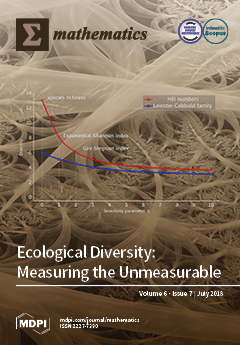The broadcast performance of the 802.11 wireless protocol depends on several factors. One of the important factor is the number of nodes simultaneously contending for the shared channel. The
Medium Access Control (
MAC) technique of 802.11 is called the
Distributed Coordination Function (
DCF).
DCF is a
Carrier Sense Multiple Access with
Collision Avoidance (
CSMA/CA) scheme with binary slotted exponential backoff. A collision is the result of two or more stations transmitting simultaneously. Given the simplicity of the
DCF scheme, it was adapted for
Dedicated Short Range Communication (
DSRC) based vehicular communication. A broadcast mechanism is used to disseminate emergency and safety related messages in a vehicular network. Emergency and safety related messages have a strict end-to-end latency of 100 ms and a
Packet Delivery Ratio (
PDR) of 90% and above. The
PDR can be evaluated through the packet loss probability. The
packet loss probability is given by,
= 1 − (
)(
), where
is the probability of channel error and
is the probability of collision.
depends on several environmental and operating factors and thus cannot be improved. The only way to reduce
is by reducing
. Currently, expensive radio hardware are used to measure
. Several adaptive algorithms are available to reduce
. In this paper, we establish a closed relation between
and the Stirling number of the second kind. Simulation results are presented and compared with the analytical model for accuracy. Our simulation results show an accuracy of 99.9% compared with the analytical model. Even on a smaller sample size, our simulation results show an accuracy of 95% and above. Based on our analytical model, vehicles can precisely estimate these real-time requirements with the least expensive hardware available. Also, once the distribution of
and
are known, one can precisely determine the distribution of
.
Full article





